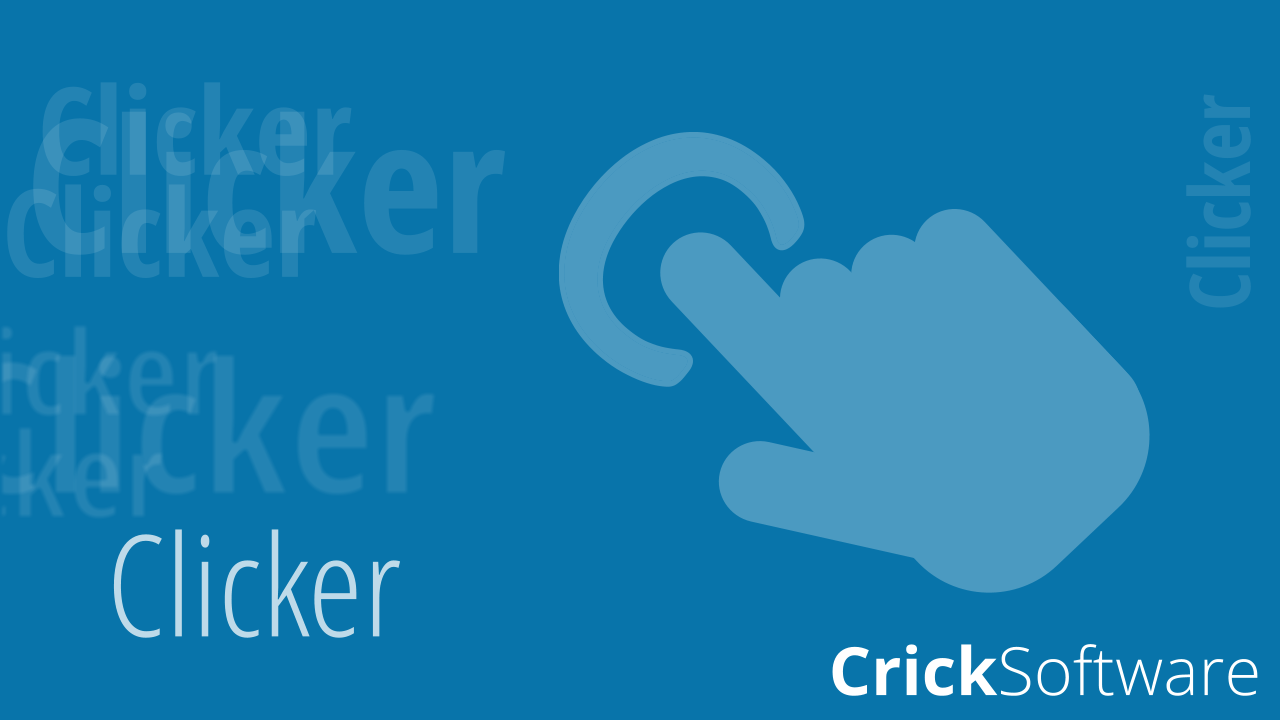In a recent conversation with an assistive technology specialist in the USA, the topic of worksheets came up.
Their school district had been using Clicker 8 for some time, but there were still a few teachers who needed convincing about using technology over the familiar worksheet method.
My contact sent me an example of a worksheet that students were asked to complete about the three classes of rocks. The worksheet was created for students in a high needs classroom. As these students already had access to our software, I looked at how we could convert the worksheet into more engaging and accessible activities using the power of Clicker.
Much of the worksheet required deductive reasoning with multiple choice style questions.
Clicker Cloze activities are a great way to assess a student’s comprehension of a topic, reading skills and ability to use contextual clues to reconstruct a piece of text. They are also a great way to provide students with multiple-choice style questions. You can provide students with a word list of all choices at once, as seen here:

Or you can provide students with more specific targeted options, as seen here:
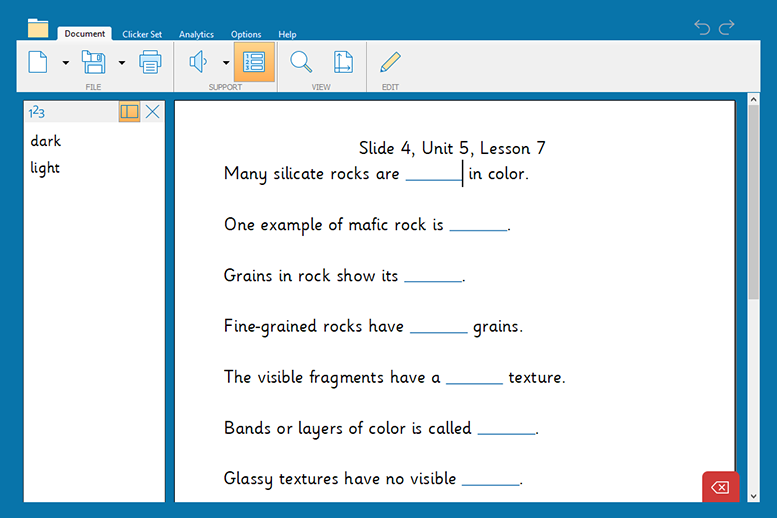
Clicker Cloze activities provide significantly more support than a traditional paper worksheet. Students can use the Speak Text icon in the support portion of the ribbon to read the document in full, as well as right-click on the words in the suggestions list to hear their options prior to selecting the answer. This fosters independence and confidence in students as they can complete work more easily on their own.
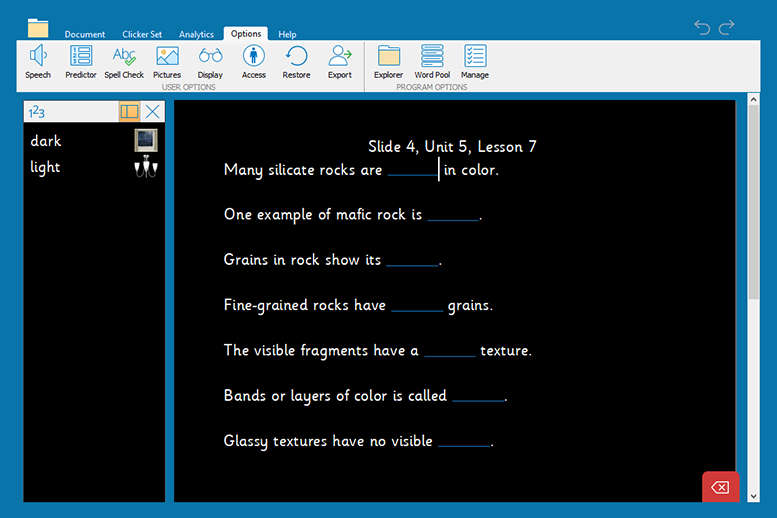
Using Clicker, teachers can also support students with visual impairments by adjusting the contrast of both the document and suggestions. Picture Support can also be added to the suggestions menu.
Students were also asked to label a diagram on the worksheet.
Clicker Boards provide access to the familiar Clicker supports that everyone knows and loves, combined with classic graphic organising features. Clicker Board offers different shapes and colour options to create diagrams for sequencing or labelling activities.
Using this board, students can drag words from the word list to label the diagram within Clicker. They can utilise the familiar speech feedback to review their instructions and the new unit vocabulary used. The completed board can also be saved to refer to for a unit review.
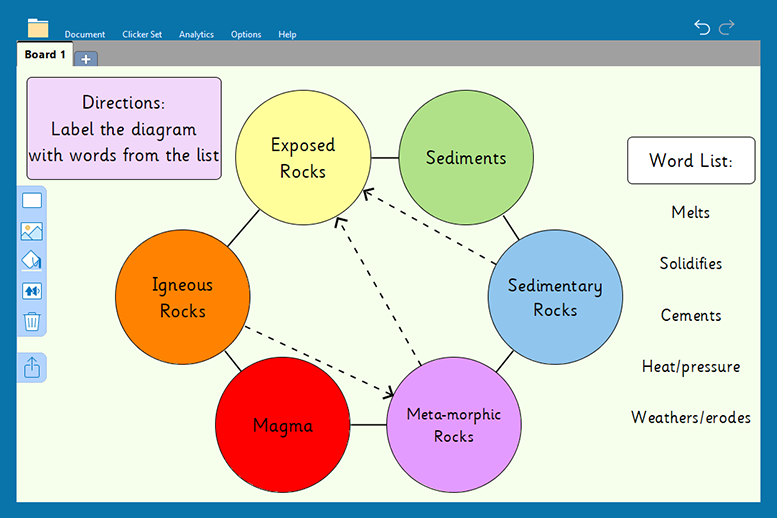
Finally, students were asked on the worksheet to match a description to a picture.
This is easily recreated using Clicker 8’s Matching Sets, which are a great way to reinforce subject knowledge. A range of activities can be created incorporating pictures, sounds and words or definitions. Creating this piece of the worksheet as a Matching Set allows students to work through an error-free activity while offering immediate feedback.
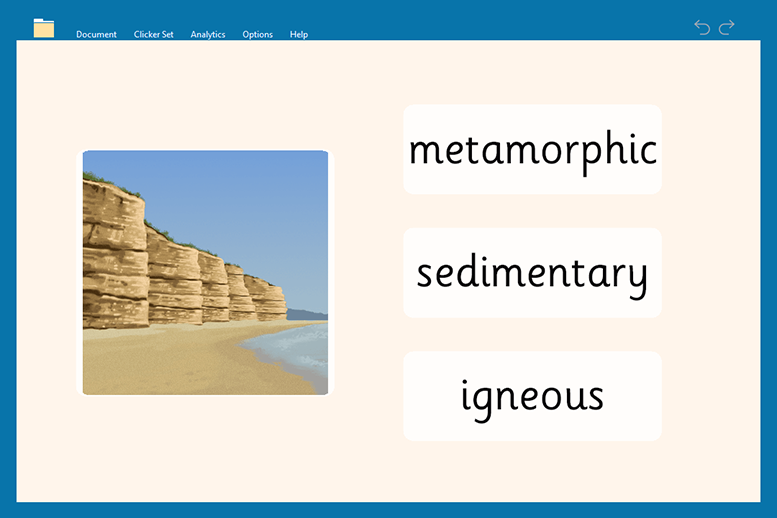
These are just a few examples of how to transition from static worksheets to a much more interactive and inclusive series of activities using Clicker.
Check out more on the virtual shift away from worksheets here.

